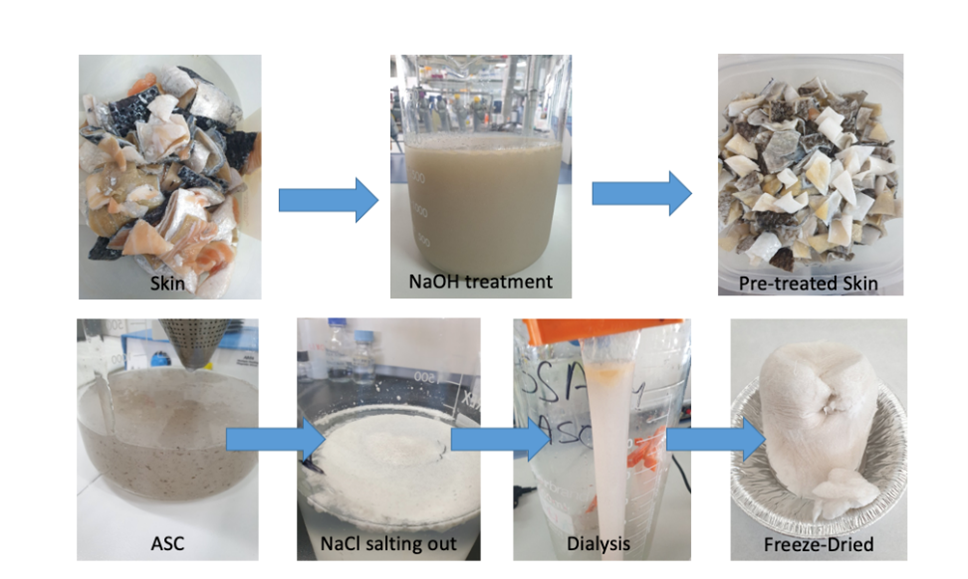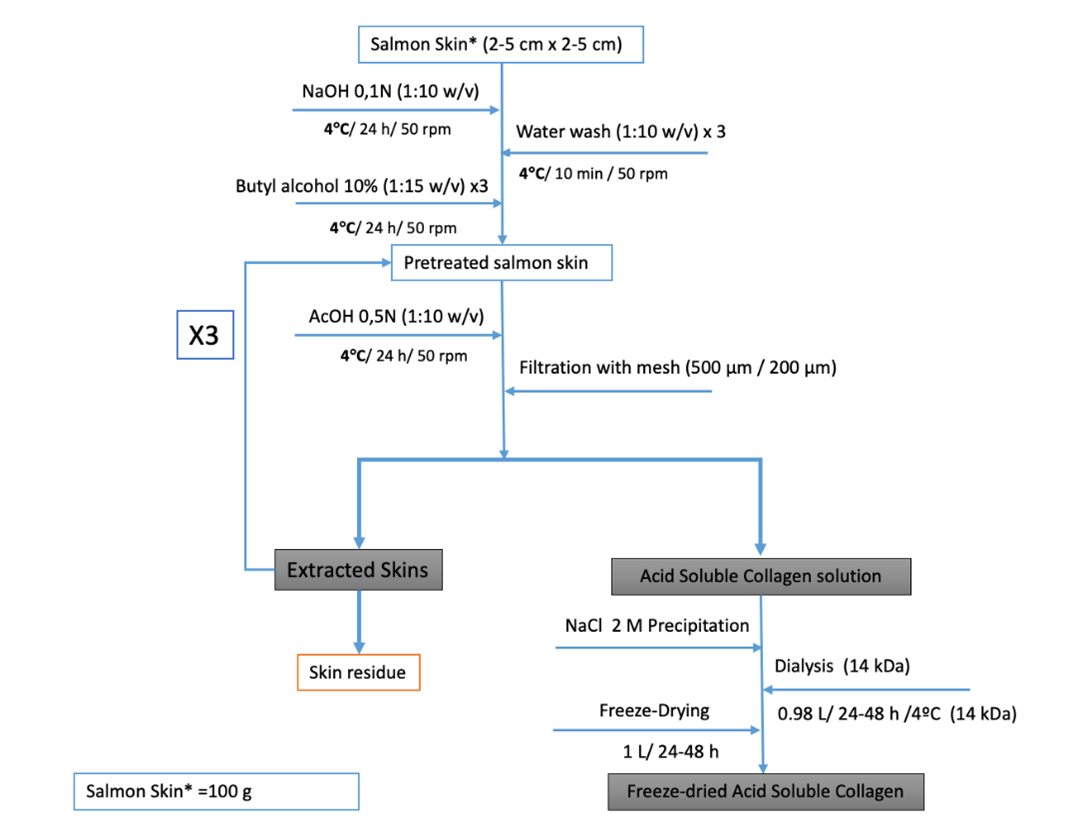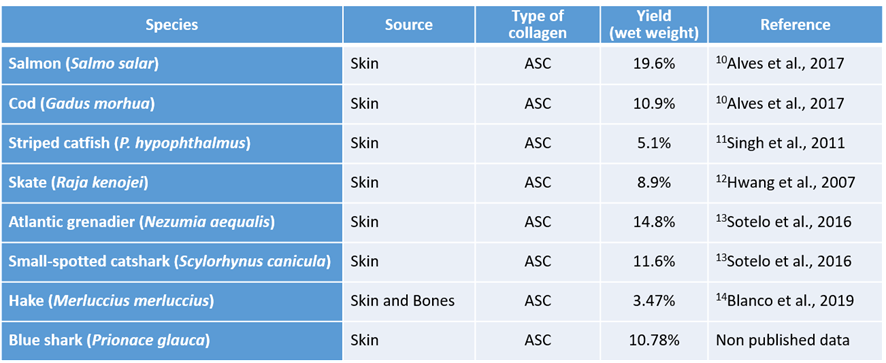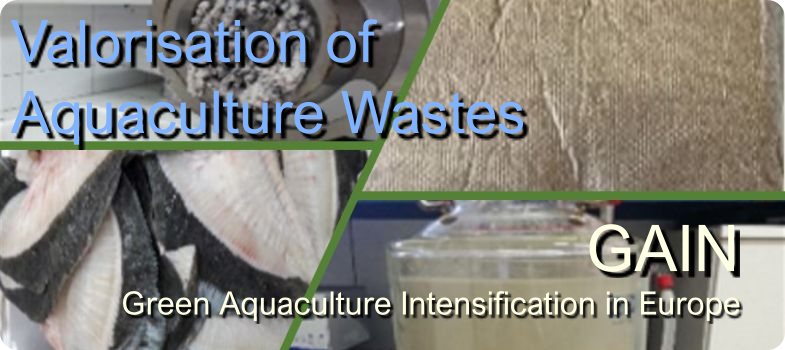Collagen extraction process. Procedure of extraction
The collagen extraction procedure comprises four main steps (Figure 17):
- Pretreatment in which raw material undergoes grinding and several washes.
- Alkaline treatment for the removal of impurities and non-collagenous materials. The most utilised chemical is NaOH.
- Solubilization of collagen molecule by an acid solution (acetic acid) rendering Soluble Acid Collagen (ASC) or pepsin-soluble collagen (PSC), these can be applied separately or combined, aiming at optimizing the yield.
- The final step in which ASC or PSC is dialyzed and freeze-dried.
All stages of extraction are performed at low temperatures (4ºC) for preventing collagen denaturation.

Figure 17. Steps for collagen extraction from salmon skin
Collagen extraction in the case of salmon skin is presented with more detail in Figure 18. The treatment of salmon skin requires a defatting step with butyl alcohol. The Acid Soluble Collagen solution obtained is treated with NaCl to precipitate collagen and concentrate it, reducing the energy required for the subsequent step of dialysis and freeze-drying. The ASC extraction process from salmon skin can be fully seen in the earlier video.

Collagen extraction yields are different depending on the species and extraction method used:

